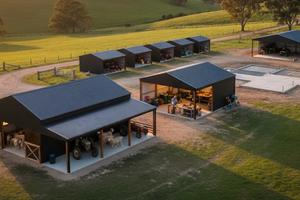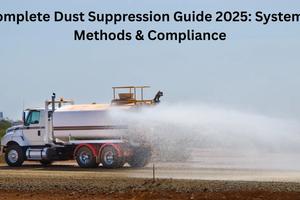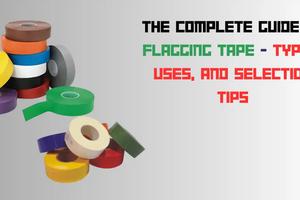Pre-Loved Items - Complete Guide to Buying, Selling & Understanding Second-Hand Goods

Key Takeaways
Essential insights to remember
Pre-loved items represent a growing sustainable shopping trend that combines affordability with environmental consciousness, offering quality second-hand goods that still have significant value and utility.
Successfully selling pre-loved items online requires proper pricing, high-quality photos, detailed descriptions, and choosing the right platforms, with potential for substantial earnings through various marketplaces.
The pre-loved market encompasses a wide range of categories, from luxury fashion to furniture, with each category having its own best practices for buying, selling, and authentication.
In a world grappling with fast fashion, overconsumption, and environmental concerns, pre-loved items have emerged as a beacon of conscious consumerism. What was once stigmatized as "second-hand" or "used" has transformed into a thriving market of carefully curated, high-quality pieces that tell stories and carry history. This comprehensive guide will walk you through everything you need to know about buying, selling, and embracing the pre-loved movement that's revolutionizing how we think about shopping.
What Are Pre-Loved Items?
The term "pre-loved" represents more than just a marketing euphemism for used goods—it embodies a shift in how we perceive previously owned items. When you purchase a pre-loved item, you're not just buying something that someone else has used; you're participating in a cycle of conscious consumption that values quality, history, and sustainability over the constant pursuit of new products.
Pre-loved items span an impressive range of categories, from designer handbags and vintage clothing to antique furniture and collectible items. What sets them apart from standard used goods is the implicit understanding that these items have been cherished, maintained, and are being passed on with care rather than discarded. This distinction has helped elevate second-hand shopping from a necessity-driven activity to a sophisticated form of retail therapy that appeals to environmentally conscious consumers across all income brackets.
The Evolution of Pre-Loved Shopping
The journey from traditional thrift stores to today's curated pre-loved marketplaces has been remarkable. What began as small consignment shops and charity stores has evolved into a sophisticated ecosystem of both physical and digital platforms. Modern pre-loved shopping venues range from high-end consignment boutiques and authenticated luxury resale websites to community-based platforms and carefully curated vintage collections.
This evolution has been driven by changing consumer attitudes, technological advancements, and a growing awareness of environmental issues. Today's pre-loved market combines the thrill of treasure hunting with the convenience of modern shopping experiences, complete with professional authentication services, detailed product histories, and seamless transaction processes.
Why Choose Pre-Loved Items?
Environmental Impact
The environmental benefits of choosing pre-loved items cannot be overstated. The fashion industry alone accounts for approximately 10% of global carbon emissions and nearly 20% of wastewater. By extending the lifecycle of existing items, pre-loved shopping directly reduces the demand for new production, helping to decrease:
- Raw material extraction and processing
- Manufacturing-related pollution
- Packaging waste
- Transportation emissions
- Textile waste in landfills
Every pre-loved purchase represents a small but significant step toward a more sustainable future, as it diverts items from landfills and reduces the demand for new production. This circular economy approach helps maximize the value of resources already in circulation while minimizing environmental impact.
Financial Benefits
The economic advantages of pre-loved shopping extend far beyond simple cost savings. While it's true that pre-loved items often come with significant discounts—sometimes up to 90% off original retail prices—the financial benefits are more nuanced:
- Access to higher quality items that would be unaffordable at full retail prices
- Opportunity to invest in premium materials and craftsmanship
- Better value retention for resale
- Ability to experiment with different styles without significant financial commitment
- Potential for finding rare or discontinued items that may appreciate in value
Smart pre-loved shoppers often find they can build a higher-quality wardrobe or furnish their homes with better pieces than they could afford buying new, all while maintaining a more reasonable budget.
Cultural and Social Impact
The pre-loved market has created a unique cultural phenomenon that goes beyond simple buying and selling. It has fostered communities of like-minded individuals who share:
- Style advice and authentication tips
- Sustainable living practices
- Product care and maintenance knowledge
- Stories and histories behind pieces
- Local buying and selling opportunities
These communities have helped transform pre-loved shopping from a solitary activity into a social experience that builds connections and shared values around sustainable consumption.
How to Buy Pre-Loved Items Successfully
Research and Authentication
The key to successful pre-loved shopping lies in thorough research and careful authentication, particularly for high-value items. This process involves several crucial steps:
Brand and Market Research
Before making any purchase, familiarize yourself with:
- Normal retail prices and typical resale values
- Common counterfeiting tactics for specific brands
- Authentic product features and materials
- Expected wear patterns and aging characteristics
- Current market trends and demand
Authentication Process
For valuable items, authentication should include:
- Detailed examination of brand-specific markers
- Verification of serial numbers and date codes
- Assessment of materials and craftsmanship
- Review of original documentation when available
- Professional authentication services for high-value pieces
Seller Verification
Always verify:
- Seller ratings and reviews
- Transaction history
- Communication responsiveness
- Return and refund policies
- Authentication guarantees
Quality Assessment
Evaluating the condition of pre-loved items requires attention to detail and understanding of materials. Here's a comprehensive approach:
Physical Condition
Check thoroughly for:
- Wear patterns and signs of use
- Damage or repairs
- Odors or stains
- Functionality of all components
- Structural integrity
Material Assessment
Consider:
- Original material quality
- Current condition relative to age
- Potential for restoration
- Expected future wear
- Care requirements
Value Analysis
Evaluate:
- Current condition versus price
- Restoration potential and costs
- Comparable sales prices
- Long-term value retention
- Replacement costs
Smart Shopping Strategies
Platform Selection
Different platforms cater to different types of pre-loved items, and understanding these distinctions can significantly improve your shopping success:
Local Consignment Stores
These physical locations offer:
- Immediate inspection opportunities
- Personal service and expertise
- Local community connection
- Negotiation possibilities
- Immediate possession of items
Online Marketplaces
Digital platforms provide:
- Wider selection and variety
- Price comparison opportunities
- Detailed item histories
- Buyer protection programs
- Authentication services
Specialty Resale Sites
These focused platforms feature:
- Category expertise
- Professional authentication
- Curated selections
- Premium service levels
- Specialized knowledge
Timing Your Purchases
Strategic timing can lead to better deals and higher-quality finds:
Seasonal Considerations
- Shop off-season for better prices
- Watch for end-of-season clearances
- Monitor holiday sales events
- Track platform-specific promotions
- Consider regional timing differences
Market Awareness
Stay informed about:
- Brand collaborations and releases
- Market trends and demands
- Platform-specific sales cycles
- Competitor pricing patterns
- New inventory arrival schedules
Impulse buys can lead to clutter and wasted money. Before making a purchase, ask yourself whether the item fits your style, home, or lifestyle. If it's clothing, consider how it will pair with what you already own. For furniture, measure your space to ensure it fits.
Selling Pre-Loved Items: A Comprehensive Guide
Preparation for Sale
Successfully selling pre-loved items requires careful preparation and attention to detail:
Item Assessment
Begin by thoroughly evaluating:
- Current market demand
- Item condition and wear
- Original retail price
- Similar items' sale prices
- Unique selling points
Documentation and History
Gather and organize:
- Original purchase receipts
- Authentication certificates
- Care instructions
- Maintenance records
- Original packaging
Presentation Preparation
Invest time in:
- Professional cleaning
- Minor repairs
- Steam or pressing
- Packaging preparation
- Photography planning
Photography and Listing
Creating compelling listings starts with excellent photography and detailed descriptions:
Photo Guidelines
Focus on:
- Multiple angles and views
- Natural lighting conditions
- Detail shots of features
- Clear condition documentation
- Size reference images
Description Writing
Include:
- Detailed measurements
- Material composition
- Care instructions
- Condition assessment
- History and provenance
Pricing Strategy
Developing an effective pricing strategy requires balancing multiple factors:
Market Analysis
Consider:
- Current market prices
- Recent sales data
- Seasonal demand
- Platform competition
- Brand value trends
Cost Calculations
Account for:
- Platform fees
- Shipping costs
- Packaging expenses
- Insurance needs
- Payment processing fees
Building a Sustainable Pre-Loved Wardrobe
Wardrobe Planning
Creating a cohesive pre-loved wardrobe requires thoughtful planning:
Foundation Building
Start with:
- Quality basic pieces
- Versatile designs
- Classic silhouettes
- Neutral color palette
- Mix-and-match potential
Style Development
Consider:
- Personal style evolution
- Lifestyle needs
- Color coordination
- Seasonal requirements
- Occasion variety
Buying pre-loved items is already a step toward sustainability, but consider the seller’s practices as well. Supporting ethical resale businesses ensures fair pricing and responsible sourcing. Many of the best online thrift stores partner with charities or focus on environmental sustainability, making them great options for conscious consumers.
Maintenance and Care
Proper care extends the life of pre-loved items:
Regular Maintenance
Implement:
- Scheduled cleaning
- Proper storage
- Minor repairs
- Professional servicing
- Rotation practices
Long-term Preservation
Focus on:
- Material-specific care
- Environmental control
- Pest prevention
- Shape maintenance
- Documentation
The Future of Pre-Loved Shopping
The pre-loved market continues to evolve with technological advances and changing consumer preferences:
Technological Integration
Emerging technologies include:
- Digital authentication systems
- Virtual try-on capabilities
- Blockchain provenance tracking
- AI-powered pricing tools
- Automated condition assessment
Market Evolution
Future trends point toward:
- Increased platform specialization
- Enhanced authentication services
- Improved logistics systems
- Sustainable packaging solutions
- Community-based trading models
Conclusion
The pre-loved market represents more than just a shopping alternative—it's a movement toward more conscious consumption that combines environmental responsibility with smart shopping practices. As technology advances and consumer awareness grows, the pre-loved market will continue to evolve, offering even more sophisticated and accessible ways to participate in sustainable commerce.
By choosing pre-loved items, you're not just making a purchase—you're making a statement about values, contributing to environmental sustainability, and participating in a growing community of conscious consumers. Whether you're buying or selling, the pre-loved market offers opportunities to maximize value while minimizing environmental impact, creating a more sustainable future for retail.





